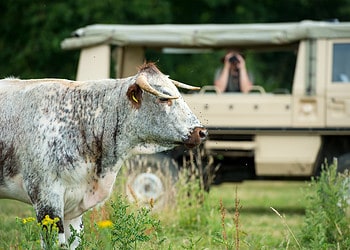Farming is arguably one of the most risky business as out there, but also one of the noblest. Everybody has to eat, but for all their efforts farmers can easily lose a year’s worth of crops due to a dry season or some other freak weather event. And as climate change intensifies, so does the stress on farmers and their crops. Australian researchers interviewed 22 farmers from Newdegate, found in the country’s southwest, to see how their mental health fares under ever worsening farming conditions. Needless to say, the study paints a grim picture. These lands are not only their workplace, but also their homes – for some, it has been this way for generations. Yet, many farmers in Australia and likely many other climate change plagued parts of the world have an ever difficult time seeing a bright future. They’re all in a terrible shape, it seems.

“The farms are more than just a business for these farmers – it’s their home, their personal history. There is no escape if they have a bad day at work,” said Neville Ellis from the Centre for Responsible Citizenship and Sustainability. “Some I talked to had become completely disengaged from the predictions and the forecasts – they shut themselves off in their properties with the curtains drawn so they wouldn’t have to face the realities outside.”
Ellis and other colleagues at Murdoch University interviewed the farmers in 2013 and 2014, which proved to be some of the most driest and warmest on record in Southwestern Australia. The variable weather is, apparently, breaking down their mental health.
“The South West [sic] of Western Australia has experienced abrupt and severe climate change in the last forty years,” Ellis said. “Farmers have always worried about the weather but today that worry is becoming detrimental to their mental health and wellbeing. They feel they have less ability to exert control over their farmlands and as a result are fearful for their future.”
Since the 1970s rainfall during the Australian winter has fallen by 20%, while average temperatures rose by nearly a degree. The extra heat brought more heatwaves, frosts and droughts which ruined crops from Australian farmers time and time again.
According to Ellis, the Australian farmers would check weather forecast websites even up to 30 times a day for signs of rain. “I also met farmers who track storm systems off the horn of Africa in the hope that the rain will arrive ten days later,” Ellis said.
Ellis believes Australian farmers should be counseled and receive support from professional health agencies. “Unfortunately, with all the projections predicting our climate will get hotter and drier, it is only going to get harder for many of these farmers,” said Mr Ellis.
Australia is one of the most vulnerable places in the world. According to a report released in 2015 by CSIRO and the Bureau of Meteorology, there’s “very high confidence” that average annual temperature will be 1.3C warmer in 2030 compared with the average experienced between 1986 and 2005. In a business-as-usual scenario, meaning the world goes about the current carbon emission trend, then Australia could see between 2.8C and 5.1C of warming by 2090. The effects on agriculture alone would be tremendously dreadful.






